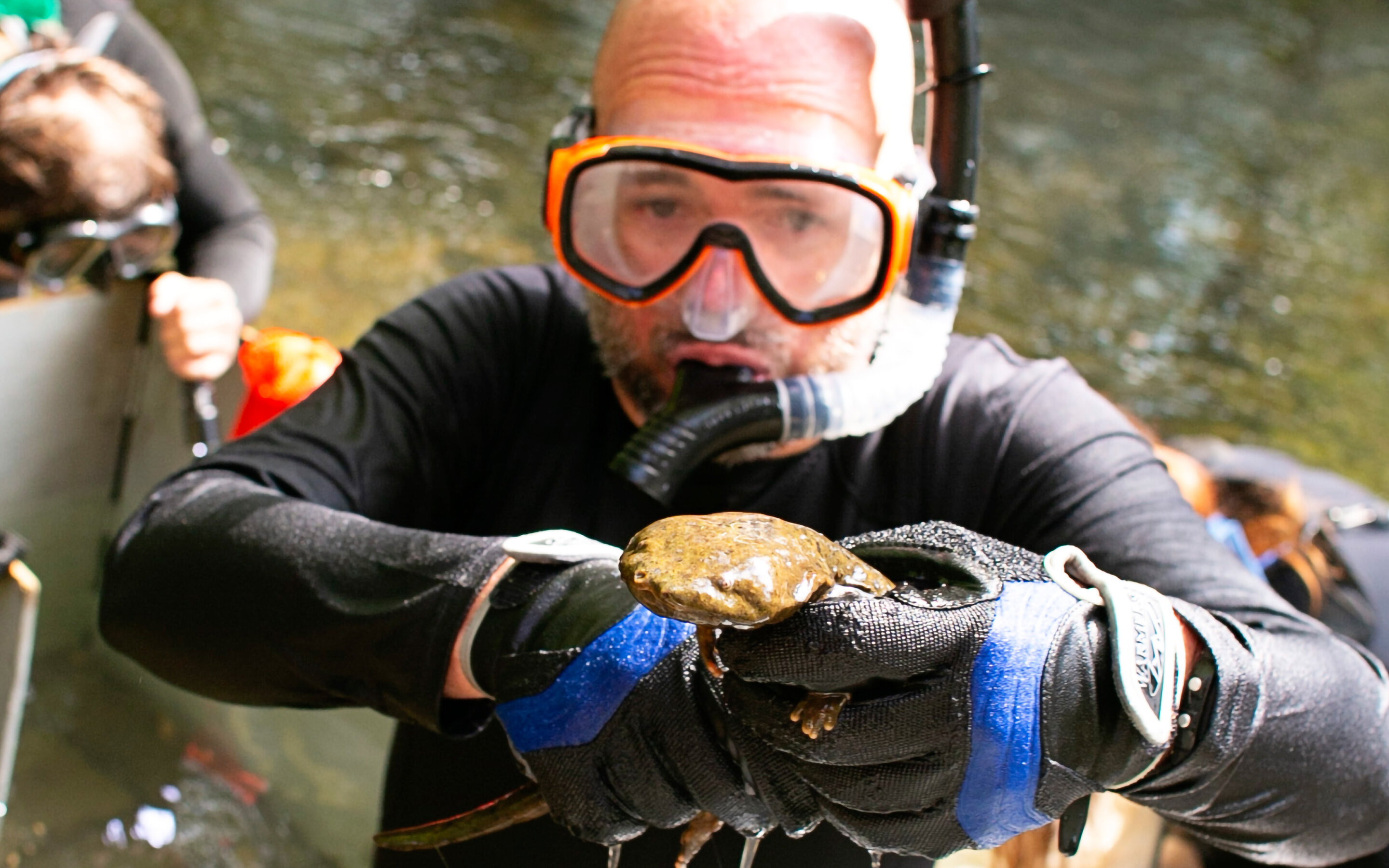The hellbenders, once the dominant predators in freshwater streams, have seen a continuous decline in their population. However, the reason behind this decline has remained a mystery. William Hopkins, a professor at Virginia Tech, suspected that environmental changes caused by human activity might be driving the decline. To investigate this, Hopkins conducted a study over eight years in ice-cold Southwest Virginia streams. The results of the study, set to be published in The American Naturalist, revealed that in deforested areas, hellbender fathers are more likely to consume their entire brood. This behavior, known as filial cannibalism, has led to the rapid disappearance of hellbenders. The findings highlight the need for urgent action to protect and restore forest cover around streams.
Selective Nesting Behavior
Known for their nesting behavior, hellbender males select nesting sites on stream bottoms and guard the eggs laid by females. In some cases, the male salamanders consume the eggs before they can hatch. Hopkins’ study revealed that in cleared lands, the frequency of filial cannibalism among hellbender fathers is significantly higher compared to areas with lush foliage. This behavior likely evolved as a survival tactic for withstanding harsh conditions. The study suggests that the severe environmental changes caused by humans are driving the hellbenders to the brink of extinction.
Concrete Nests for Study
Studying the reproductive biology of hellbenders has always been challenging due to the inaccessibility of their nesting sites under large boulders in streams. However, Hopkins discovered a research tool during a conference that involved placing concrete boxes in streams where hellbenders reside. The salamanders nested in these boxes, allowing for the collection of eggs for captive rearing. Through years of trial and error, Hopkins and his team observed a clear pattern: the reproductive behavior of hellbenders differed significantly between degraded and pristine habitats. The study required eight years of field work but provided valuable insights into the impacts of deforestation on these creatures.
Unprecedented Discoveries
The long-term access to hellbenders provided by the study yielded unexpected discoveries. The researchers found two previously unknown parasites, including a leech believed to specialize in hellbenders and a microscopic blood parasite called a trypanosome. The study also helped describe the hormone cycles of hellbenders. To further expand their knowledge, the researchers are now equipping the concrete boxes with underwater video cameras to document the behavior of hellbenders in their natural habitat.
Conservation Actions
While the specific mechanisms triggering cannibalistic behavior in hellbender males remain unknown, the study demonstrated the crucial role of upstream forest cover in reducing filial cannibalism. To protect hellbenders and other aquatic species like mussels and fish, the researchers emphasize the importance of re-establishing forest cover around streams and implementing best agricultural management practices that prevent livestock from entering waterways. These actions not only benefit the wildlife but also contribute to improved water quality and support terrestrial animals like migratory birds.
More information:
William A. Hopkins et al, Filial Cannibalism Leads to Chronic Nest Failure of Eastern Hellbender Salamanders (Cryptobranchus alleganiensis), The American Naturalist (2023). DOI: 10.1086/724819
Citation:
Study reveals reason hellbenders are disappearing (2023, June 26), retrieved 26 June 2023, from https://phys.org/news/2023-06-reveals-hellbenders.html
This document is subject to copyright. Apart from any fair dealing for the purpose of private study or research, no part may be reproduced without the written permission. The content is provided for information purposes only.
Denial of responsibility! TechCodex is an automatic aggregator of the all world’s media. In each content, the hyperlink to the primary source is specified. All trademarks belong to their rightful owners, and all materials to their authors. For any complaint, please reach us at – [email protected]. We will take necessary action within 24 hours.

Jessica Irvine is a tech enthusiast specializing in gadgets. From smart home devices to cutting-edge electronics, Jessica explores the world of consumer tech, offering readers comprehensive reviews, hands-on experiences, and expert insights into the coolest and most innovative gadgets on the market.


